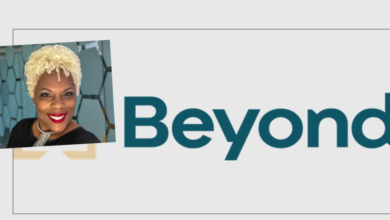Is It a Product? How ODI Embraces Product Mindset

This article first appeared on the blog of the California Office of Data and Innovation.
Delivering a project on time and on budget is traditionally cause for a celebration. It means that tasks have been checked off, and the deliverable has been met. But is the work really over? (Should it be?)
Those questions are the mindset difference between traditional project management and product management. For the Office of Data and Innovation (ODI), product management is a fundamental part of who we are because we see services as products.
“ODI exists to improve the customer experience for Californians,” said ODI Director Jeffery Marino. “We have been actively working to create a statewide culture that prioritizes the people we serve. In the past, services were created and sustained. But at ODI, we exist to test that initial theory, based on research, user journeys, and data analysis. ODI provides the subject matter expertise to prototype ideas and to help state departments improve solutions.”
This is traditionally a private-sector approach. Why does it work for government?
“Government’s job is to make sure our services meet our customers’ needs,” said JP Petrucione, the acting deputy director of product at ODI. “A product mindset is about delivering value for the customer. It’s about understanding customers and their needs and adopting a long-term vision and strategy for continual improvements. By being data-driven and user-focused, a product management approach to problem solving ultimately saves money and improves trust in government.”
Yesenia Aparicio is an ODI product manager and explains how her role is unique in the state, in that it’s about relationships and trust, much more than tasks.
“I partner with leadership by listening and learning from their experiences and how they navigate their environments in order to uncover areas of opportunity. My role is an intuitive one and relies heavily on empathizing and understanding where human relationships lie to make strategic decisions. A product’s success is best assured when there is alignment across different agendas surrounding product direction, especially when there are multiple sponsors or stakeholders involved.”
This model and mindset requires new skills and a willingness to rethink how the state serves Californians. And the fact is, your title does not need to be “product manager” to embrace this philosophy. No matter whether you work directly with Californians through a state program, or you only work with other state colleagues, you have a “customer” and can work to improve your customer’s experience. How?
Enter ODI’s new training service, CalAcademy, which exists to meet this need. Through its unique courses, delivered at no cost to state workers, staff are being trained in human-centered design principles and adding plain language skills to their resumes, all in order to aid other state departments to deliver a better customer experience for Californians.
“The entire CalAcademy team uses a product management approach in developing and deploying training,” said Anne Crew-Renzo, CalAcademy training program manager. “We iterate and revise our content and processes continuously. We collect feedback from the departments we partner with on training in order to improve for the next engagement. This approach allows us to get shoulder-to-shoulder with our customers and work together toward the same goal of high-quality training aimed at service improvement.”
If it’s done right, the work is never truly “done.” That’s not always easy to say in the public sector, but in order to be equitable and accessible, it’s necessary.
For ODI’s data services team, that means being prepared to constantly improve and add to data models so the data that state departments use in decision-making is continually refined.
“Data is not static, so we must approach the way we develop data models with the end user in mind first,” said Jason Lally, ODI’s deputy director of Data Services and Engineering. “Needs change, and so does data. If we don’t adopt a product mindset, we run the risk of creating information products that are misaligned to the real need. The impact of this is making decisions based on outdated, missing, or biased data which can cascade into unintended harms in policy, programs, and services.”
ODI’S TOP TAKEAWAYS
Product managers create and manage the road map. They collaborate with the business owner to establish the vision, determining what to build and why based on research, with the user’s experience top of mind.
Product managers ensure that the business owner is able to make data-driven decisions based on information collected from continuous customer and user feedback loops.
Project managers have the blueprint. They decide how to build it, with timelines and resources. They are the task managers, responsible for reporting and monitoring risks.
This mindset is collaborative and cross-functional, requiring continuous improvement and feedback.
The work of product managers and project managers doesn’t end at project delivery. Feedback and data should lead to a design loop that creates opportunities for future iterations.
And feedback from the actual users of your product — whether that’s internal colleagues or Californians enrolled in your department’s program — needs to drive the road map for your next improvements.
Interested in learning more? ODI is planning to have training resources on product management for state employees coming in the fall.
Those interested may sign up here for the ODI newsletter.



